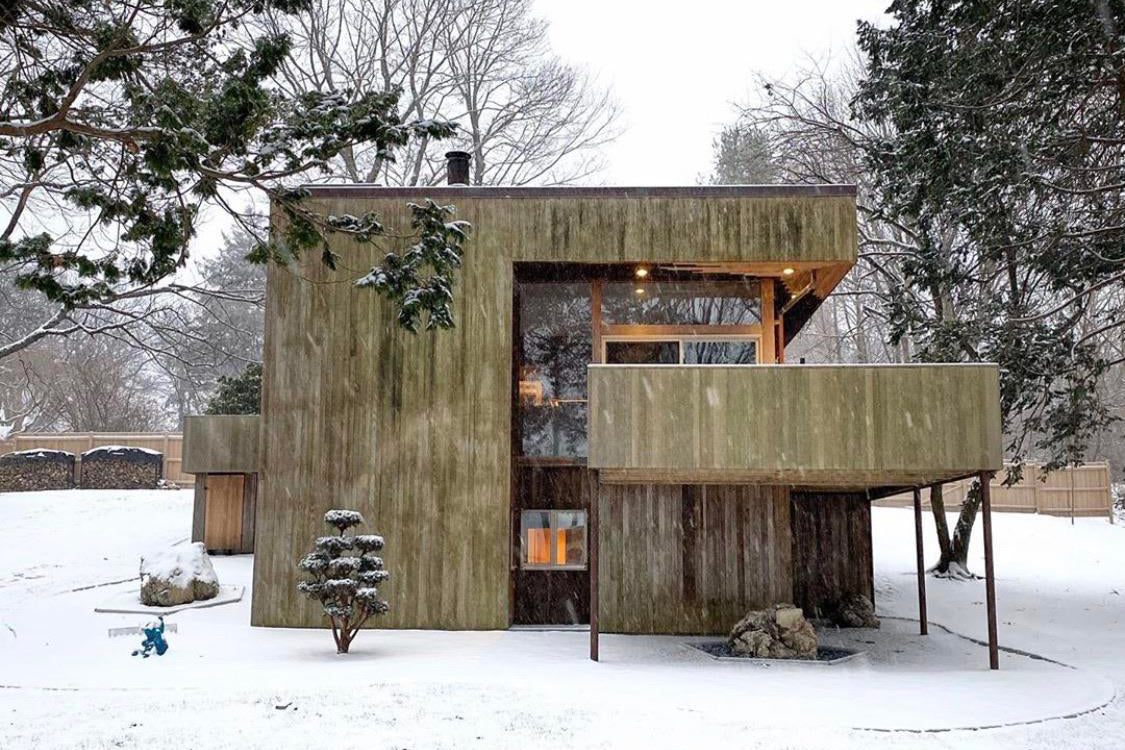A mysterious death of a Hamptons playboy California transplant reads more like the brief of a spy novel or David Lynch movie than the obituary of a noted architect, but Norman Jaffe was not your typical buttoned down pencil pusher. Born in Chicago in 1932 and spending the majority of his working life in the Hamptons, Jaffe came of age during the expansion of modernism into America, and both his life and design philosophy embody that radical departure that transformed American design and social life.

After a stint in the military and completing his Bachelor’s degree at Berkeley, Jaffe began working under his professor and mentor Joseph Esherick, from whom much of Jaffe’s style derives. Esherick is most well known for establishing the College of Environmental design at Berkeley, as well as being part of the founding design team of the Sea Ranch community northwest of San Francisco. If you squint, those early Eshrick Sea Ranch houses could be confused with Jaffe’s Hamptons based modernist monuments. Jaffe elevated and refined that strain of west coast modernism out east.

Jaffe was an uncompromising designer, a trait which infiltrated all facets of his life. His clients and contemporaries viewed Jaffe as an uncompromising genius in the vein of Frank Lloyd Wright or a fictional Howard Roark. He held a strong view of how houses should speak to the landscape, no doubt influenced by his time spend in California. Strong geometric lines, a palette of neutral woods, a strong control of light, and modernist detailing are all hallmarks of Jaffe’s designs. This rigidity was a double edged sword though, with the majority of his projects ending over budget and with client’s feathers ruffled.

Jaffe’s uncompromising commitment to an idea or cause carried through to his business as well—he was a through and through hustler. In his 35 year career, his firm saw some 600 projects pass through his doors- from beach houses in the Hamptons to skyscrapers in Manhattan. At one point, Jaffe was said to have turned 8 out of every 10 prospective clients down with only the most willing to allow his design philosophy to flow unfettered receiving the honor of his commission. Despite all this, Jaffe’s name was not nearly as well known as his friends Charles Gwathmey or Richard Meier.

Towards the end of his career, Jaffe took a drastic turn towards eastern mysticism, and could no longer accept the millions spent on private single family houses (many of them part time residences); instead, turning his energies towards more holistic and charitable work. One of his best known works, the Jewish Center of the Hamptons, takes Jaffe’s approach to design to its pinnacle. Light streams though multiple skylights across pale wood clad walls and ceilings, created a sense of serenity and calm. Multiple repeated geometric angles are repeated to give an intimate space a sense of scale and refinement.

Jaffe’s death, and the controversy surrounding it, cemented his position as a larger than life figure in the world of New York architecture. Although a frequent swimmer, Jaffe didn’t learn to swim until his fifties and was by all accounts a mediocre swimmer at best. On the morning of August 19, 1993, Jaffe set out to a nearby Bridgehampton beach for his daily swim, leaving his wallet on the seat of his faded Mercedes. He never returned to collect it. Jaffe’s body was missing for months. Speculation flowed about a faked death, a potential suicide, even rumors of an estranged client taking out a hit on him. In the end, a pelvis bone was recovered confirming what his family had known all along- that his stubbornness and doggedness had led him into dangerous waters that he couldn’t handle.






